Settle in as Eric Pulls Back the Curtain on 2020 Portland Real Estate
 And just like that, it’s February 2020. If someone asked you when you were a kid what you thought 2020 would look like, did you picture this? I visualized space travel, robots, flying cars, lasers and futuristic stuff…not this everyday adulty life gig.
And just like that, it’s February 2020. If someone asked you when you were a kid what you thought 2020 would look like, did you picture this? I visualized space travel, robots, flying cars, lasers and futuristic stuff…not this everyday adulty life gig.
So where the heck did January go? To be honest, the reason my annual market outlook is so delayed is because this January was super busy for the Portland market. Now that I think about it, we were even selling houses right through the holidays as well. Portland may be experiencing growing pains, but the real estate market is alive and flourishing.
Last Year’s Prediction: Nailed it!
A year ago, I was calling for our buyers and investor clients to get into the market. It was a year of opportunity for our buyer clients after many years of seller-favored, tight inventory conditions. For the first time in a long while, buyers enjoyed shopping the market without urgency & pressure, having more than one house to choose from, price drops, seller incentives, and contingent offers. How sweet it was! Instead of calling it a buyer’s market or a seller’s market, we called it a “broker’s market” as we could make both sides happy by creating win/win transactions for our clients. We could place our buyers in homes without real estate “whiplash” and our sellers were walking away from the closing table with a smile on their face excited to move on in the market. It was a unique time. Everyone was pretty happy. I hope that you or someone you know took advantage of it.
2020 Current Conditions
The Portland market has always been nimble and this year is no exception. It changed quickly! Midway through Q4 of 2019, Portland inventory started to dwindle down. Furthermore, most sellers don’t list during the winter and holiday months, so market inventory continued to fall. Despite the BRUTAL Portland weather this winter, the buyers came out of the holidays with a big appetite and gobbled up what was left on the market. The close in Portland neighborhoods currently sit at 1.3 months of housing inventory (in the 450k-700k range). So the 2020 cycle begins with a fiery combination of low housing inventory, great interest rates, a seemingly healthy economy (with many new jobs coming to Portland) and a rapid erosion of affordability (this pushes buyers further from town to seek more affordable options). The market is behaving accordingly in response to high demand. Demand is being driven to Portland by a combination of reasons: jobs/economy, lifestyle, climate & natural resources, and an affordable option for many West Coast transplants.
2020 Outlook
Welp….it’s an election year which has a tendency to slow the market. Buyers and sellers that aren’t being pushed into the market tend to sit tight through election times out of fear of the unknown. However, the upcoming election doesn’t seem to be having an impact on the market…yet. Portland shows resilience when other markets slow. When things have slowed for us in the past, we bounce back quickly (including the recession). Thanks to our urban growth boundary and natural geographic barriers, we don’t have sprawl which has been a saving grace for our unique market. Portland offers jobs plus lifestyle and attracts a wide demographic spectrum of folks looking to call Portland home. Pair this with a mild climate and abundant natural resources and you have a winner. Therefore, I predict 2020 will continue its low-inventory trend which favor sellers, drives prices and frustrates buyers. We have to be careful with the “drives prices” part though. Affordability is a major concern. The chasm between the cost of Portland real estate and our median household income seems to be growing. Jobs are coming but wages haven’t caught up and the cost of living keeps climbing. This pushes buyers to outlier markets (Vancouver, Milwaukie, Beaverton, Oregon City, etc). For the urbanites that don’t want to pay for the high priced houses but want to stay in town, they’ll drive demand in the ‘attached’ market (townhouses/condos) which had a slow 2019. This will stabilize pricing in the attached market. Properly priced, well-presented, detached houses from the $200k to $1m range will continue to fly off the shelf. The $1m-$1.5m market is a ‘move up’ market for many wanting to upgrade from their existing home . This market presents opportunities for buyers to make a great purchase; however, tapping their “trapped equity” from their existing home in order to make this purchase can present challenges (certainly not insurmountable but can be daunting to the client). In surprising fashion, Portland’s upper end market ($1.5m +) is moving at a pace you may find interesting (fast). Of course, these properties need to deliver the full package to fetch the price, but this market segment seems very confident in Portland as a place to make these big purchases. I find these big numbers surprising as I clearly remember how freaked out I was when I bought my first house in Mt. Tabor for $185k. However, like many other places, we are bursting at the seams. The numbers for incoming population growth are staggering which in real estate economics translates to demand. Portland is in high demand which has all but diminished the lower end of the market and made it feel normal to buy and sell very expensive real estate.
prices” part though. Affordability is a major concern. The chasm between the cost of Portland real estate and our median household income seems to be growing. Jobs are coming but wages haven’t caught up and the cost of living keeps climbing. This pushes buyers to outlier markets (Vancouver, Milwaukie, Beaverton, Oregon City, etc). For the urbanites that don’t want to pay for the high priced houses but want to stay in town, they’ll drive demand in the ‘attached’ market (townhouses/condos) which had a slow 2019. This will stabilize pricing in the attached market. Properly priced, well-presented, detached houses from the $200k to $1m range will continue to fly off the shelf. The $1m-$1.5m market is a ‘move up’ market for many wanting to upgrade from their existing home . This market presents opportunities for buyers to make a great purchase; however, tapping their “trapped equity” from their existing home in order to make this purchase can present challenges (certainly not insurmountable but can be daunting to the client). In surprising fashion, Portland’s upper end market ($1.5m +) is moving at a pace you may find interesting (fast). Of course, these properties need to deliver the full package to fetch the price, but this market segment seems very confident in Portland as a place to make these big purchases. I find these big numbers surprising as I clearly remember how freaked out I was when I bought my first house in Mt. Tabor for $185k. However, like many other places, we are bursting at the seams. The numbers for incoming population growth are staggering which in real estate economics translates to demand. Portland is in high demand which has all but diminished the lower end of the market and made it feel normal to buy and sell very expensive real estate.
Natural disaster or other non-natural market forces aside, Portland real estate has a very promising future and has always been well-insulated. With all this said, if our local government doesn’t figure out a way to better manage our addiction/mental health/homelessness crisis, Portland may lose its reputation as the “darling” of the Pacific Northwest and no matter how great this city is, many people will choose different markets to call home. Rainy weather is tolerable but corruption and greed are inexcusable especially with what it costs to live here.
2020 Buzz Words & New Concepts
iBuyer: Also known as institutional buyers or residential REIT (real estate investment trust): Have you heard the OpenDoor commercials on the radio? iBuyer or ‘instant offer’ is easily the biggest new disruptor in real estate and Inhabit is all over it. iBuyers have come into the market backed by billions of venture capital funds and are buying up real estate that fits in their “buy box”. Homeowners that qualify for an instant offer (and choose to take it), are typically taking a discounted price for the convenience and avoiding the traditional selling route. As a student of change, I became very intrigued with iBuyer and became certified as an iRep Professional. Our philosophy with iBuyer is “pro-consumer choice”…what works best for our clients. iBuyers are real in today’s market and we want to share all of the options with our clients so they get the most out of their real estate assets. It works for some clients and we can show you how.
Trapped equity: Many homeowners who have owned their real estate for 5 + years are sitting on a decent amount of equity that is trapped in their real estate. In a tight market, trapped equity can add challenges to a buyer that wants to move up or move down within the market. We’ve found that many people will simply opt out of moving around in the market simply because of the perceived risks and challenges with using the equity in your home to help achieve the daunting buy/sell or sell/buy. There are more layers, but we manage these all the time. In the end, our clients say that it’s worth the effort.
Concierge real estate services: It is more important than ever for real estate professionals to be a trusted advisor not only throughout the sale, but on an ongoing basis after the sale. Realtors are on the front line of clients’ needs as a sale closes. Concierge real estate service continues after closing where Realtors continue to provide useful resources, information and advice on an ongoing basis. In today’s demanding and competitive market, we are reinforcing our value by continuing to support our clients on all things real estate.
Final Words
 Even though we’re not living in the Jetson-like society that I envisioned as a kid, 2020 is chock full of new and exciting stuff: self-parking, electric cars, virtual reality, and an impressive (and concerning) amount of technology & connectivity. At the push of a button, you can have almost anything you want delivered to your doorstep within hours. Heck, you can push a button and order up a random Realtor to open up a house for you (but how dare you do that!). Real estate is no exception to the expectation of today’s “now society”. As professionals, our response time must be faster, our knowledge deeper and our ability to navigate this market must be sharp and focused. One thing that technology can’t change, is the human factor that is necessary to create happy buyers and happy sellers in real estate transactions. This is our wheelhouse. We embrace today’s disruptions & technology and use them as tools to enhance our clients’ position and experience; however, we feel more strongly than ever that real estate is a people business and we are here to stay.
Even though we’re not living in the Jetson-like society that I envisioned as a kid, 2020 is chock full of new and exciting stuff: self-parking, electric cars, virtual reality, and an impressive (and concerning) amount of technology & connectivity. At the push of a button, you can have almost anything you want delivered to your doorstep within hours. Heck, you can push a button and order up a random Realtor to open up a house for you (but how dare you do that!). Real estate is no exception to the expectation of today’s “now society”. As professionals, our response time must be faster, our knowledge deeper and our ability to navigate this market must be sharp and focused. One thing that technology can’t change, is the human factor that is necessary to create happy buyers and happy sellers in real estate transactions. This is our wheelhouse. We embrace today’s disruptions & technology and use them as tools to enhance our clients’ position and experience; however, we feel more strongly than ever that real estate is a people business and we are here to stay.
Thank you for your continued support and trust. Here’s to a prosperous 2020!
Eric




 Another thing that makes it totally Portland is that a lot of times, when someone buys a home there, the people selling the home will pass their decorations along to the new buyers. But like I said, one of the things that makes it so very not like Portland is holy crap, it’s crowded! At least for the second half of December. The cops block off the street to car traffic now, which I guess makes it even more Portland. If you live on Peacock Lane and you have an emergency at 5:30 on a December evening –– like you’ve run out of kombucha or something –– you’re sure as heck not getting in your car to get more. I mean, not like you have to. There’s a Walgreen’s right down at the end of the block where, yes, last time I checked they sell kombucha. There’s also a weed dispensary around the corner which used to be this place called Immortal Piano –– broke my heart when it closed because, with a name like Immortal Piano…
Another thing that makes it totally Portland is that a lot of times, when someone buys a home there, the people selling the home will pass their decorations along to the new buyers. But like I said, one of the things that makes it so very not like Portland is holy crap, it’s crowded! At least for the second half of December. The cops block off the street to car traffic now, which I guess makes it even more Portland. If you live on Peacock Lane and you have an emergency at 5:30 on a December evening –– like you’ve run out of kombucha or something –– you’re sure as heck not getting in your car to get more. I mean, not like you have to. There’s a Walgreen’s right down at the end of the block where, yes, last time I checked they sell kombucha. There’s also a weed dispensary around the corner which used to be this place called Immortal Piano –– broke my heart when it closed because, with a name like Immortal Piano…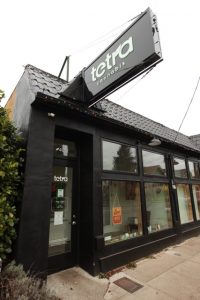
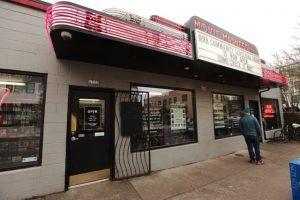 So I know what you’re thinking. You’re thinking, “Well, Brian, that’s all super interesting. Do houses on Peacock Lane cost more than equivalent houses a block or so away?”
So I know what you’re thinking. You’re thinking, “Well, Brian, that’s all super interesting. Do houses on Peacock Lane cost more than equivalent houses a block or so away?”
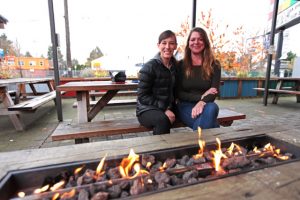
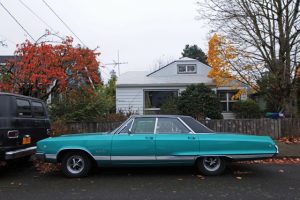
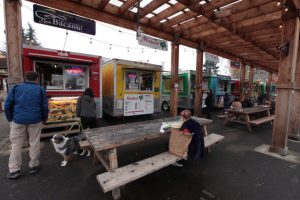
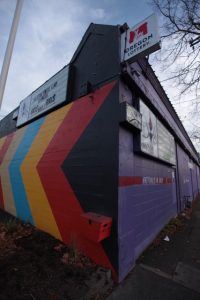
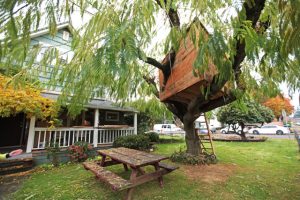
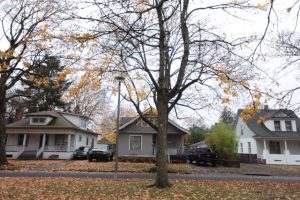
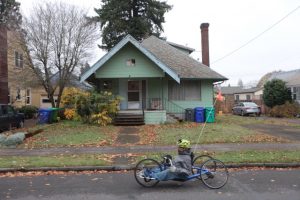 As I mentioned in another post, in Portland we have 20 blocks to a mile so even if you’re out by 82nd, you’re within biking distance of downtown. And it’s a nice ride, too, through Clinton, Ladd’s Addition, and over the Hawthorne bride. You can’t even get lost. Just follow the thousands of other bike commuters making the same trip. It’s a good ride back home. Short enough to do it every day. Strenuous enough that you can justify …you know where I’m going with this …
As I mentioned in another post, in Portland we have 20 blocks to a mile so even if you’re out by 82nd, you’re within biking distance of downtown. And it’s a nice ride, too, through Clinton, Ladd’s Addition, and over the Hawthorne bride. You can’t even get lost. Just follow the thousands of other bike commuters making the same trip. It’s a good ride back home. Short enough to do it every day. Strenuous enough that you can justify …you know where I’m going with this …
 This is the time of year that many of us slow down, spend more time with family and friends, reflect on our year and start setting our intentions for the New Year. The holiday season, for many, prompts a feeling of gratitude. Maybe it’s because we slow down, take time off, reflect on the year as it winds down and what it has meant. But, did you know that the act of feeling and expressing gratitude has extreme benefits for our physical health, psychological well-being and relationships with others? Scientific studies have been going on for decades trying to understand the full benefits of simply expressing gratitude.
This is the time of year that many of us slow down, spend more time with family and friends, reflect on our year and start setting our intentions for the New Year. The holiday season, for many, prompts a feeling of gratitude. Maybe it’s because we slow down, take time off, reflect on the year as it winds down and what it has meant. But, did you know that the act of feeling and expressing gratitude has extreme benefits for our physical health, psychological well-being and relationships with others? Scientific studies have been going on for decades trying to understand the full benefits of simply expressing gratitude.  Research has shown that gratitude helps us celebrate the present and participate more in life. It helps block negative and toxic emotions like envy, resentment and regret that can destroy happiness. Grateful people are more stress resistant and have a higher sense of self-worth.
Research has shown that gratitude helps us celebrate the present and participate more in life. It helps block negative and toxic emotions like envy, resentment and regret that can destroy happiness. Grateful people are more stress resistant and have a higher sense of self-worth.

 Let me start by saying we’re not curing cancer here. I know that. What we do is help people do something they’re going to do anyway.
Let me start by saying we’re not curing cancer here. I know that. What we do is help people do something they’re going to do anyway.
 People, though. People can be happy.
People, though. People can be happy.




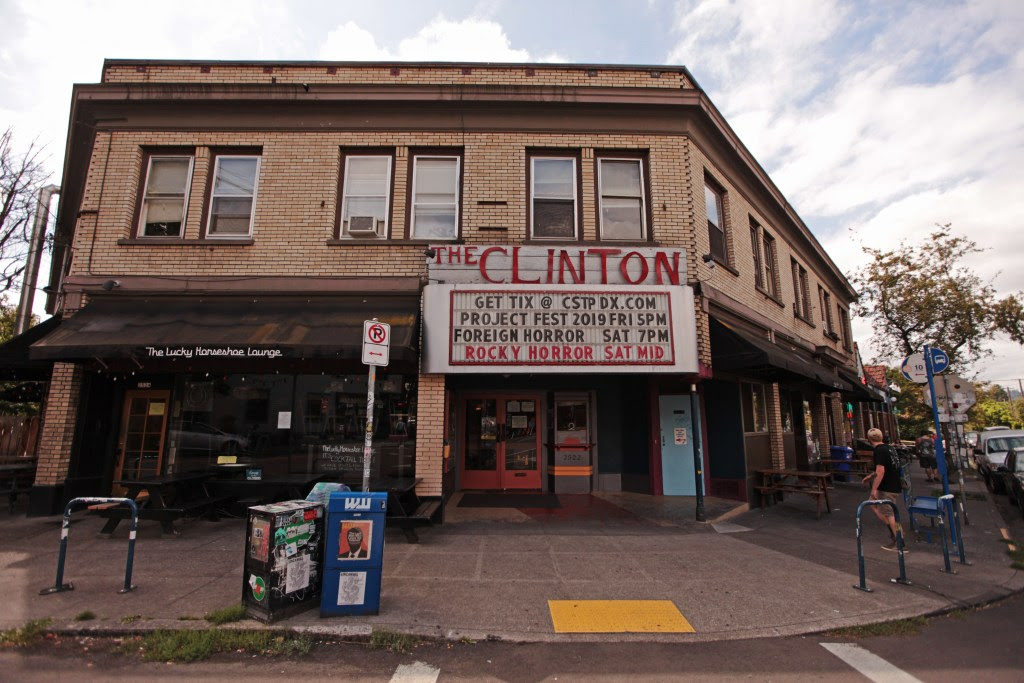
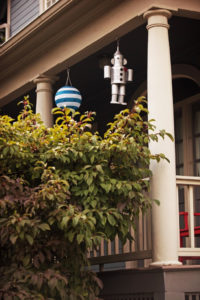 I’ve already gone on about Division (
I’ve already gone on about Division (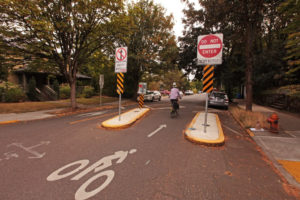
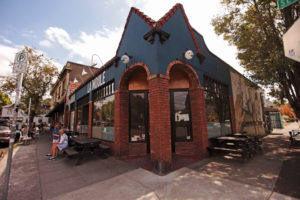
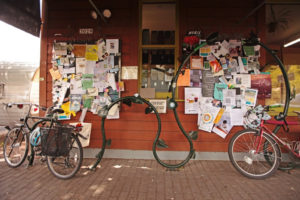 You also have two optometrists, a boutique that sells kid stuff …even two real estate offices.
You also have two optometrists, a boutique that sells kid stuff …even two real estate offices.
 These four simple words “outside of the ordinary”, turns a switch in the brain. It’s freeing, kind of like coloring outside the lines. It’s an opportunity to explore the options of what’s possible and not feel hemmed in by preconceived limits or expectations. I remember my second-grade teacher telling me to color inside the lines; she had no idea what she was saying. Having the courage to be creative and go beyond what’s expected is the goal. How am I going to be unique or extraordinary today? What can I accomplish in my life and career if I actively seek what is outside of the ordinary?
These four simple words “outside of the ordinary”, turns a switch in the brain. It’s freeing, kind of like coloring outside the lines. It’s an opportunity to explore the options of what’s possible and not feel hemmed in by preconceived limits or expectations. I remember my second-grade teacher telling me to color inside the lines; she had no idea what she was saying. Having the courage to be creative and go beyond what’s expected is the goal. How am I going to be unique or extraordinary today? What can I accomplish in my life and career if I actively seek what is outside of the ordinary?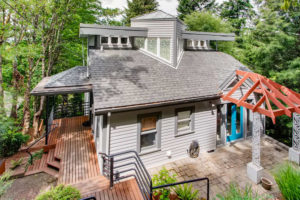 In the world of real estate, brokers have the opportunity to think outside the ordinary daily. Helping people buy and sell real estate is not cut and dry by any stretch. No two deals or clients are alike so having the ability to think outside the box is paramount in providing true value. Personally, I have found the best way to do this is to have an exceptionally organized plan, be proactive, have steadfast balance in your life, an immaculate and positive attitude, the ability to look for solutions when faced with obstacles and last, but not least, a client-centered approach.
In the world of real estate, brokers have the opportunity to think outside the ordinary daily. Helping people buy and sell real estate is not cut and dry by any stretch. No two deals or clients are alike so having the ability to think outside the box is paramount in providing true value. Personally, I have found the best way to do this is to have an exceptionally organized plan, be proactive, have steadfast balance in your life, an immaculate and positive attitude, the ability to look for solutions when faced with obstacles and last, but not least, a client-centered approach.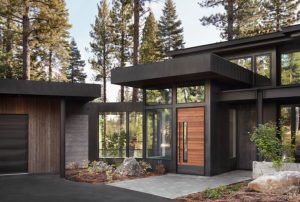 If you are looking for an extraordinary advocate to help you navigate the world of real estate, please reach out. I will take the reins and guide you to your dream home!
If you are looking for an extraordinary advocate to help you navigate the world of real estate, please reach out. I will take the reins and guide you to your dream home!

 they drive up to your home and the landscaping is nicely manicured, the walkway is clean, there are welcoming potted plants at the front door, the door itself is inviting, the windows are clean, the exterior paint is in great condition, perhaps there are even a couple of nice chairs or a porch swing (if applicable), it will create a positive first impression. Remember you are just trying to set the stage that tells the potential buyer this is a quality home and a lot of care has gone into it.
they drive up to your home and the landscaping is nicely manicured, the walkway is clean, there are welcoming potted plants at the front door, the door itself is inviting, the windows are clean, the exterior paint is in great condition, perhaps there are even a couple of nice chairs or a porch swing (if applicable), it will create a positive first impression. Remember you are just trying to set the stage that tells the potential buyer this is a quality home and a lot of care has gone into it.
 important for building on that first impression. Take extra care to make this space as warm and inviting as possible. Also, notice the scent of your home when you enter the front door (this is especially important if you have a pet). A nice scent helps create an inviting atmosphere that works on a subconscious level with the prospective buyer. Nothing will dissuade a buyer faster than “house-a-tosis”. It’s important to correct the odor instead of covering it up if it’s due to mold or carpet damage caused by pets, etc. Stay away from heavy perfume scents or anything overbearing. Freshly cut flowers in the entry and throughout the house can provide some natural scent and add extra beauty and warmth to your home.
important for building on that first impression. Take extra care to make this space as warm and inviting as possible. Also, notice the scent of your home when you enter the front door (this is especially important if you have a pet). A nice scent helps create an inviting atmosphere that works on a subconscious level with the prospective buyer. Nothing will dissuade a buyer faster than “house-a-tosis”. It’s important to correct the odor instead of covering it up if it’s due to mold or carpet damage caused by pets, etc. Stay away from heavy perfume scents or anything overbearing. Freshly cut flowers in the entry and throughout the house can provide some natural scent and add extra beauty and warmth to your home. collection of widgets, but a prospective buyer might be distracted by all of the clutter. You want the buyer to look carefully at your home, not your possessions. A good rule-of-thumb is if it’s smaller than a grapefruit, pack it up. Remove any countertop appliances that are not built-in. Your furniture and accessories should help them get a sense of the space in the room and allow them to envision moving their own things in. Consider removing your personal photographs and memorabilia. You want buyers to envision creating their own memories in your home, not distracted by yours. Closets, basements, attics and garages should be clean, well-lit and organized. Ample storage is a common buyer request so make yours appear as spacious as possible. Do not make the mistake of moving the clutter from the living spaces to these areas. A temporary storage unit might be well worth the investment while your home is on the market. Plus you are moving, so consider the packing process underway!
collection of widgets, but a prospective buyer might be distracted by all of the clutter. You want the buyer to look carefully at your home, not your possessions. A good rule-of-thumb is if it’s smaller than a grapefruit, pack it up. Remove any countertop appliances that are not built-in. Your furniture and accessories should help them get a sense of the space in the room and allow them to envision moving their own things in. Consider removing your personal photographs and memorabilia. You want buyers to envision creating their own memories in your home, not distracted by yours. Closets, basements, attics and garages should be clean, well-lit and organized. Ample storage is a common buyer request so make yours appear as spacious as possible. Do not make the mistake of moving the clutter from the living spaces to these areas. A temporary storage unit might be well worth the investment while your home is on the market. Plus you are moving, so consider the packing process underway! Look at every surface: floors, walls, doors, windows, ceilings, built-in furniture, etc. Also make sure that all of your home’s systems are in good working condition (electrical, mechanical & plumbing).
Look at every surface: floors, walls, doors, windows, ceilings, built-in furniture, etc. Also make sure that all of your home’s systems are in good working condition (electrical, mechanical & plumbing). you are trying to appeal to the masses so if your home is decorated in a way that only a select few can appreciate, change it. Don’t remodel – it’s amazing what a fresh coat of neutral paint and simplifying and rearranging your current possessions will do. A few new accessories like fluffy new bath towels, accent pillows and fresh flowers might just add the finishing touches. Also, if your house is on the dark side then purchasing some extra lamps or using LED bulbs will be money well spent.
you are trying to appeal to the masses so if your home is decorated in a way that only a select few can appreciate, change it. Don’t remodel – it’s amazing what a fresh coat of neutral paint and simplifying and rearranging your current possessions will do. A few new accessories like fluffy new bath towels, accent pillows and fresh flowers might just add the finishing touches. Also, if your house is on the dark side then purchasing some extra lamps or using LED bulbs will be money well spent. all the clutter removal, repairs, and improvements. This is money well spent and will put the final polish on your “show ready” home. And don’t forget the windows!
all the clutter removal, repairs, and improvements. This is money well spent and will put the final polish on your “show ready” home. And don’t forget the windows!




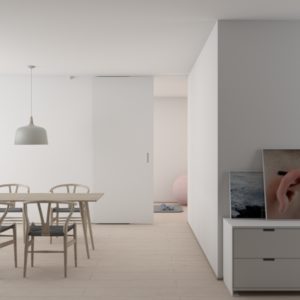




 When is the best time to put my home on the market? It’s a question we Realtors get from clients all the time. Now, thanks to
When is the best time to put my home on the market? It’s a question we Realtors get from clients all the time. Now, thanks to  We at Inhabit also understand that there are a lot of factors, often out of your control, that can affect the timing of putting a home on the market. Family and work demands, completing long overdue projects around the house, or even waiting for a neighbor down the street to sell before you put your sign up can all come into play. If that’s the case, talk with us. We know the market and can help you with great service and market knowledge at any time of the year.
We at Inhabit also understand that there are a lot of factors, often out of your control, that can affect the timing of putting a home on the market. Family and work demands, completing long overdue projects around the house, or even waiting for a neighbor down the street to sell before you put your sign up can all come into play. If that’s the case, talk with us. We know the market and can help you with great service and market knowledge at any time of the year.
 As a small, Portland-based company, our goal was to celebrate everything local in our design. We partnered with
As a small, Portland-based company, our goal was to celebrate everything local in our design. We partnered with 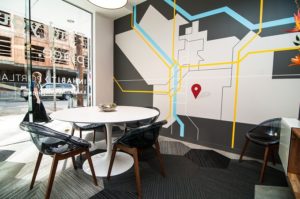
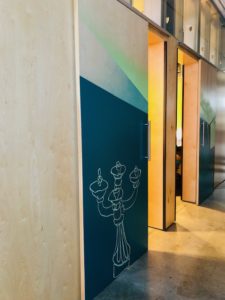
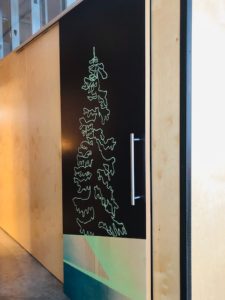

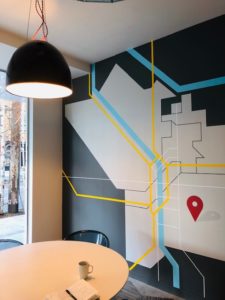 We turned to Portland’s own
We turned to Portland’s own 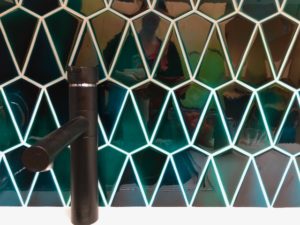






 General Home Inspection
General Home Inspection
 Testing r
Testing r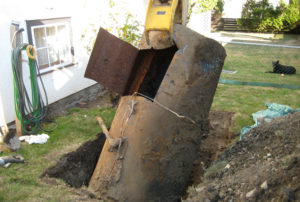 This is not always necessary, but if you or your Realtor sees that there may have been oil heat in the past and you don’t find a record of decommissioning, you should get it done! Most old homes around Portland were heated with oil back in the day (many still are), and while oil heat can be just fine, an old neglected tank is not! Old tanks can corrode over time, leaking oil and sludge into the soil that can seriously mess up your gardening plans.
This is not always necessary, but if you or your Realtor sees that there may have been oil heat in the past and you don’t find a record of decommissioning, you should get it done! Most old homes around Portland were heated with oil back in the day (many still are), and while oil heat can be just fine, an old neglected tank is not! Old tanks can corrode over time, leaking oil and sludge into the soil that can seriously mess up your gardening plans.  At this point, if you have concerns over any of the inspection results, you have 3 options:
At this point, if you have concerns over any of the inspection results, you have 3 options:



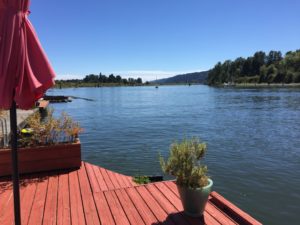 If I told you that you could own a peaceful vacation retreat at an affordable price within a half hour of downtown Portland would you believe me? Believe it or not, it’s true. Within minutes of downtown Portland (and in some cases a stone’s throw), there are hundreds of FLOATING HOMES right in front of our eyes. These unique homes come in all shapes, sizes and prices and deliver a truly peaceful, fun retreat from the day-to-day grind of life.
If I told you that you could own a peaceful vacation retreat at an affordable price within a half hour of downtown Portland would you believe me? Believe it or not, it’s true. Within minutes of downtown Portland (and in some cases a stone’s throw), there are hundreds of FLOATING HOMES right in front of our eyes. These unique homes come in all shapes, sizes and prices and deliver a truly peaceful, fun retreat from the day-to-day grind of life.  As brokers, we hear quite often from our clients the desire to purchase a second property whether it’s at Mt. Hood, Bend or other destinations which could take hours to get to. One of the most important factors when purchasing a second home is convenient access. Taken from first-hand experience, once the honeymoon period is over after purchasing a vacation property, it’s all too easy to talk yourself out of a long drive on a Friday after work to retreat to your vacation home. However, with dozens of floating home moorages within a half hour of Portland, the much-needed escape is only a short drive away.
As brokers, we hear quite often from our clients the desire to purchase a second property whether it’s at Mt. Hood, Bend or other destinations which could take hours to get to. One of the most important factors when purchasing a second home is convenient access. Taken from first-hand experience, once the honeymoon period is over after purchasing a vacation property, it’s all too easy to talk yourself out of a long drive on a Friday after work to retreat to your vacation home. However, with dozens of floating home moorages within a half hour of Portland, the much-needed escape is only a short drive away.  On top of relaxation, these properties afford fun and entertainment such as swimming, boating, fishing, wildlife observation, kayaking, and unlimited access to waterways, islands, and much more.
On top of relaxation, these properties afford fun and entertainment such as swimming, boating, fishing, wildlife observation, kayaking, and unlimited access to waterways, islands, and much more. 


 While these types of properties continue to grow in popularity in Portland, so does the buying power for condos and townhouses. The recent over-saturation new rental apartments in Portland has softened prices for condos and townhouses. With Portland’s limited land for development (and sprawl) and encouraged density, these properties will remain a player in the market and will “weather” this shift as our population continues to grow and buyers prioritize simplicity and efficiency. In the meantime, this is an outstanding market segment to take advantage of for our buyer and investor clients.
While these types of properties continue to grow in popularity in Portland, so does the buying power for condos and townhouses. The recent over-saturation new rental apartments in Portland has softened prices for condos and townhouses. With Portland’s limited land for development (and sprawl) and encouraged density, these properties will remain a player in the market and will “weather” this shift as our population continues to grow and buyers prioritize simplicity and efficiency. In the meantime, this is an outstanding market segment to take advantage of for our buyer and investor clients..jpg)
.jpg)


